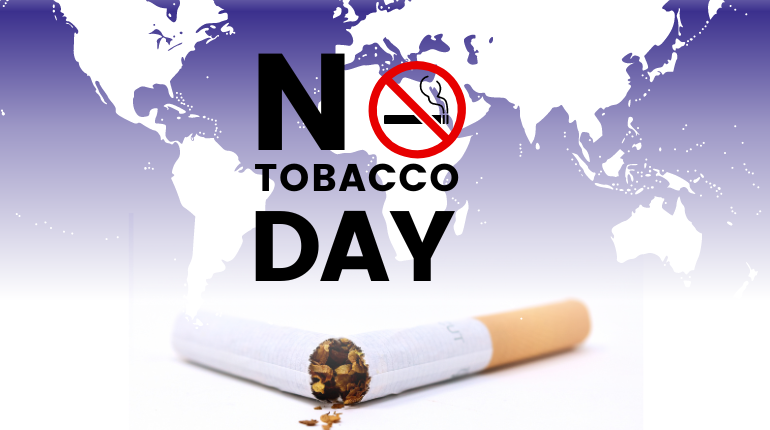Leveraging Technology to Mitigate Smoking Risks
- Home
- Leveraging Technology to Mitigate Smoking Risks

Smoking causes about 90% (or 9 out of 10) of all lung cancer deaths, It remains one of the most significant public health challenges worldwide, with far-reaching negative impacts on both individuals and society, no smoking day serves as a reminder that it's never too late to quit smoking and improve your health and well-being.
Advancements in technology offer promising solutions to mitigate the risks associated with smoking and promote healthier lifestyles.
The detrimental effects of smoking on health are well-documented. From respiratory illnesses like chronic bronchitis and emphysema to life-threatening conditions such as lung cancer and heart disease, smoking is a leading cause of preventable death globally. Moreover, secondhand smoke poses serious health risks to nonsmokers, especially vulnerable populations like children and pregnant women.
Beyond its toll on health, smoking imposes substantial social and economic burdens. Healthcare systems strain under the weight of treating smoking-related illnesses, while productivity losses due to illness and premature death exact a significant economic toll. Additionally, tobacco cultivation and production contribute to environmental degradation and deforestation, exacerbating the global climate crisis.
Role of Technology in Smoking Prevention:
Technology has emerged as a powerful tool in the fight against smoking, offering innovative solutions to help individuals quit or reduce their tobacco consumption.
Here are some ways in which technology is making a difference:
1. Mobile Applications:
Numerous smartphone apps provide support for smoking cessation , offering features such as personalized quit plans, craving trackers, motivational messages, and community support forums. These apps leverage behavioral science principles and real-time data tracking to empower users on their quit journey.
2. Nicotine patch and gum technology
Nicotine patch and nicotine gum technology are advancements in the design, formulation, and delivery mechanisms of nicotine replacement therapy products. These technologies aim to improve the efficacy, convenience, and user experience of these aids, nicotine patch use advanced drug delivery systems to manage withdrawal symptoms, while gums offer rapid nicotine release, improved taste, texture, and mouthfeel. Many products are also sugar-free and tooth-friendly, promoting dental health and preventing tooth decay. These products are often packaged in portable containers, allowing users to carry them discreetly whenever cravings arise. Further research and development are ongoing to drive innovation.
3. Wearable Devices:
Wearable technology, including smartwatches and fitness trackers, can monitor vital signs and physical activity levels, providing users with real-time feedback on the health benefits of quitting smoking . Some devices even offer stress-reduction techniques and mindfulness exercises to help manage cravings and withdrawal symptoms.
4. Telemedicine:
Telemedicine platforms connect smokers with healthcare providers remotely, offering convenient access to evidence-based counseling and medication-assisted treatments for nicotine dependence . This approach eliminates barriers to care, particularly for individuals in rural or underserved areas, and ensures ongoing support throughout the quitting process.
5. Social Media and Online Communities:
Online platforms and social media channels provide virtual support networks for individuals trying to quit smoking . These communities offer a sense of camaraderie, encouragement, and accountability, fostering connections among people with shared experiences and goals.
While the negative impact of smoking remains a catastrophe for public health, technology offers promising avenues for prevention and cessation.
By harnessing the power of mobile apps, wearable devices, telemedicine, online communities, and gamification, we can empower individuals to break free from nicotine addiction and lead healthier, smoke-free lives. However, concerted efforts from policymakers, healthcare providers, technology developers, and communities are essential to maximize the potential of technology in combating the global tobacco epidemic.
If you enjoyed reading this article, you can read more about technology and autism or Technology is changing breast cancer treatment